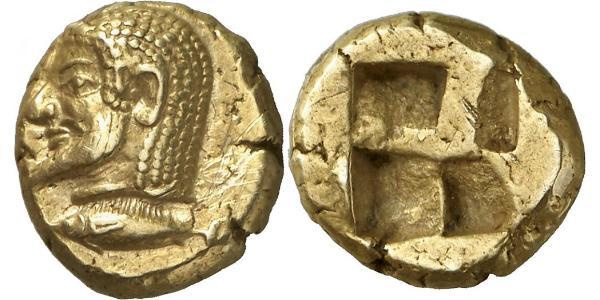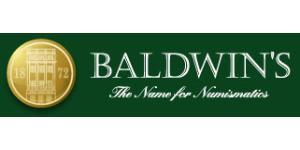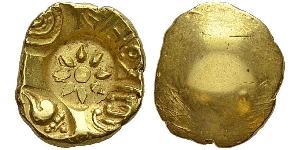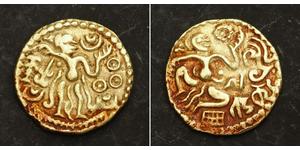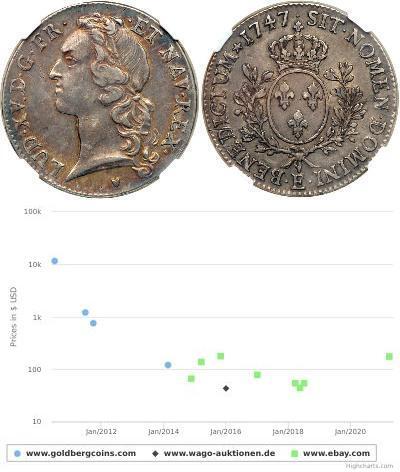(Vendue pour $5500.0)
The Prospero Collection of Ancient Greek Coins. MYSIA. Kyzikos (c.550-500 B.C.), Electrum Hekt e, 2.66g. Male head faci ng to left, with a pointed beard, a tunny below to left. Rev. Quadripartite incuse square (Rosen 447 (this coin); Von Fritze, Nomisma VII, 1912, 66; SNG France 194). Wonderful archaic style and an excellent companion piece to the previous stater, good very fine and extremely rare. This coin published in ‘Early Greek Coins from the Collection of Jonathan P. Rosen’, N. Waggoner, ACNAC 5, 1983, p. 30, 447, illustrated on pl. 18. Purchased from Spink & Son Ltd., London, 10 March 1987 The Prospero Collection includes an impressive group of electrum staters from Kyzikos. Within this group can be seen a fascinating variety of types, many of them mythological, featuring heroes and tales from Greek legend, as well as mythical beasts. Real humans and animals also appear on the coins, and these provide us with a glimpse into the ancient Greek world. There are almost two hundred different types of electrum staters recorded for Kyzikos in as many years, as well as an extensive series of electrum hektes. The coins always feature the tunny (tuna fish) as part of their obverse type as it was the symbol of Kyzikos. Early Greek coinage, which had its origins on the coast of Asia Minor, had been produced from the alloy electrum, but was abandoned by most city-states when silver became the preferred metal for the majority of coinage. Some city-states did however continue to produce coinage in electrum and the issues of Kyzikos are perhaps the most famous and spectacular of these. Kyzikos was a rich trading city-state, due to its location between the Aegean and the Black Sea. Its coinage of electrum staters, a clear expression of its wealth, were produced between about 550-350 B.C. The coins always possess an impressive obverse type, the reverses bearing a quadripartite incuse square, and the flans are invariably thick and, at times, exist in a variety of shapes. US$ 5,500
voir plus
Prix
Similar Coin Groups

1 Tetradrachm Grèce antique (1100BC-330) ...
Le groupe a 190 pièces / 163 prix
Add coin to this group
2025-05-16
- New coin is added to 1 Sen Japon Cuivre
1 Sen Japon Cuivre
Le groupe a 9 pièces / 8 prix
⇑
JAPAN 1 Sen 10 (1877) - Copper - VF - 930
2025-05-09
- Historical Coin Prices
Vous pourriez être intéressé par...

